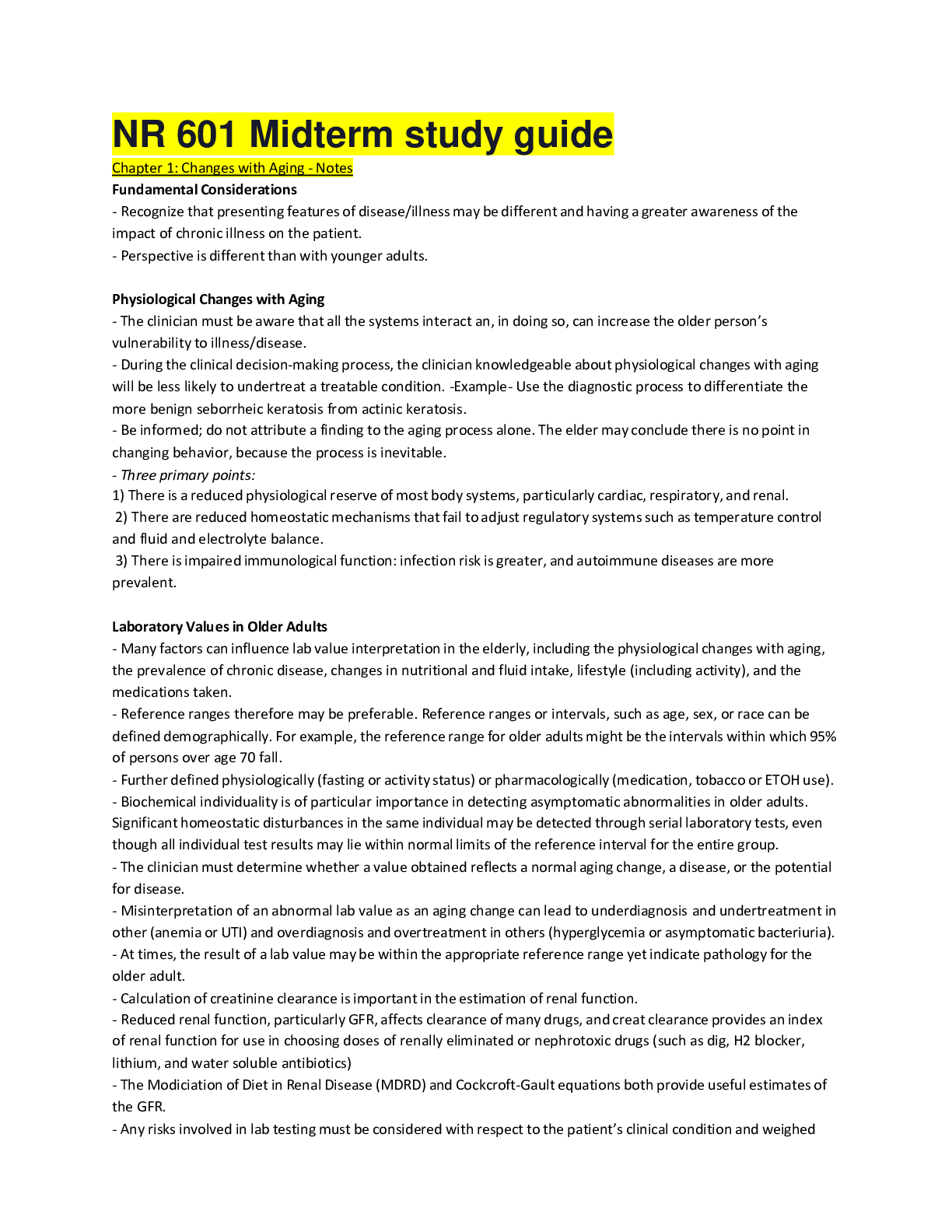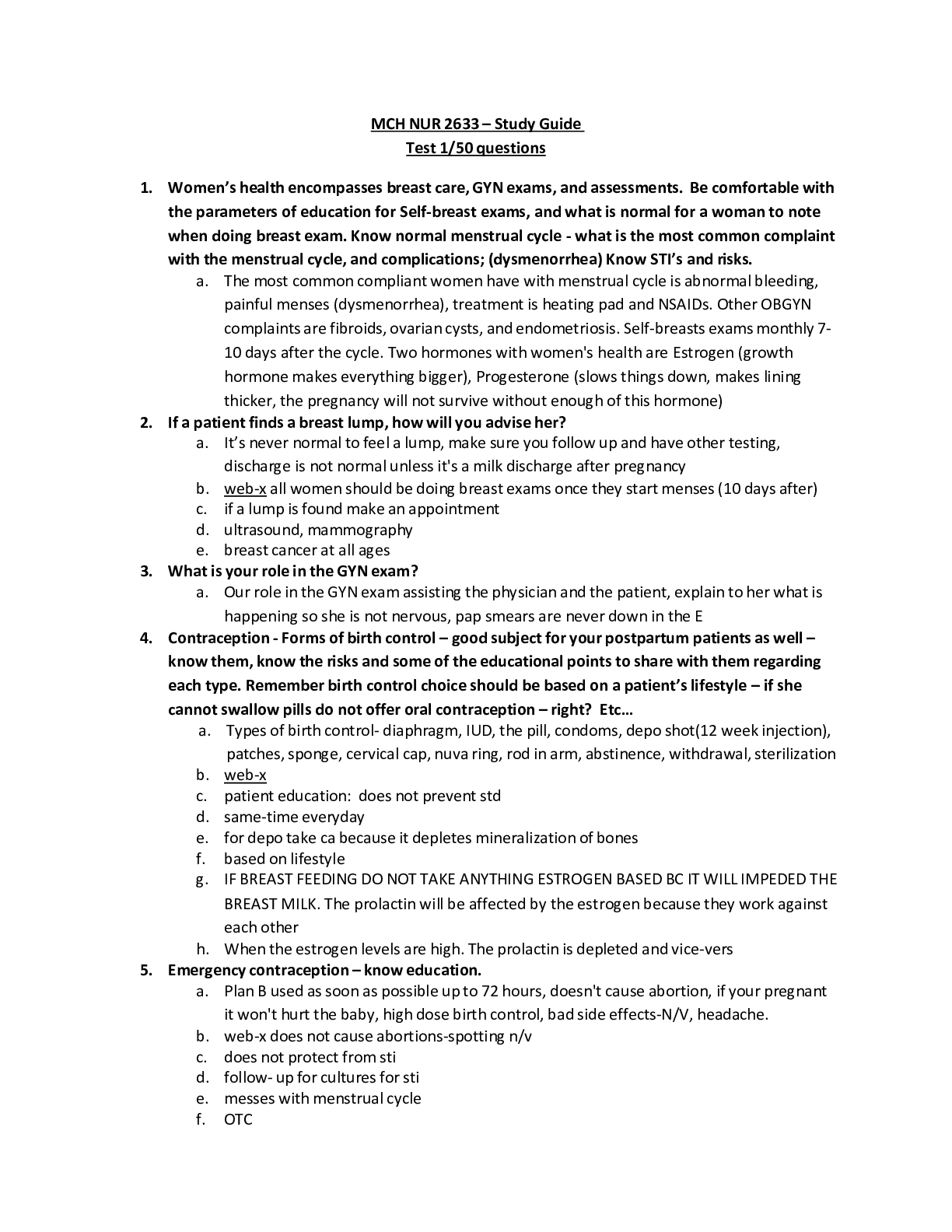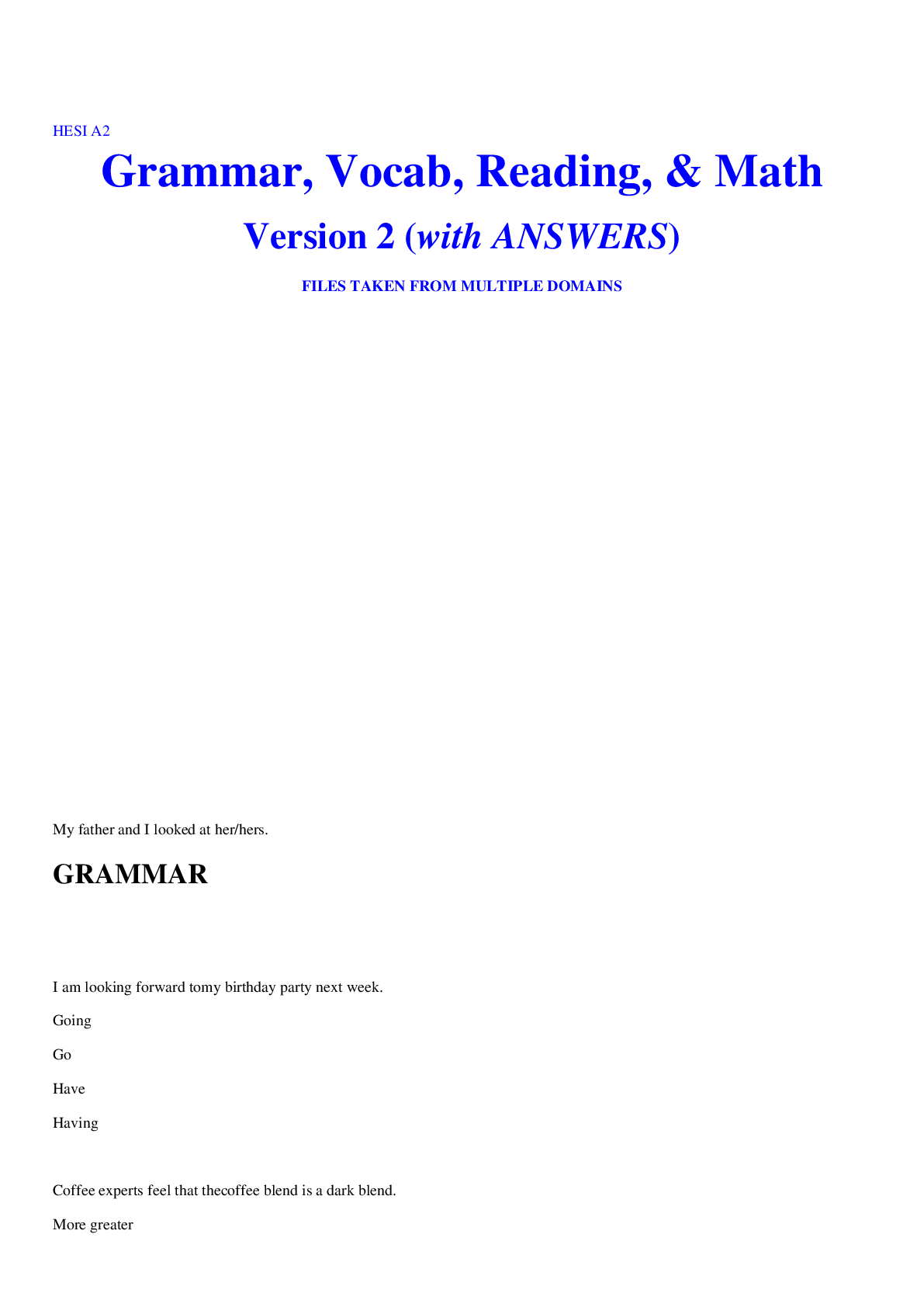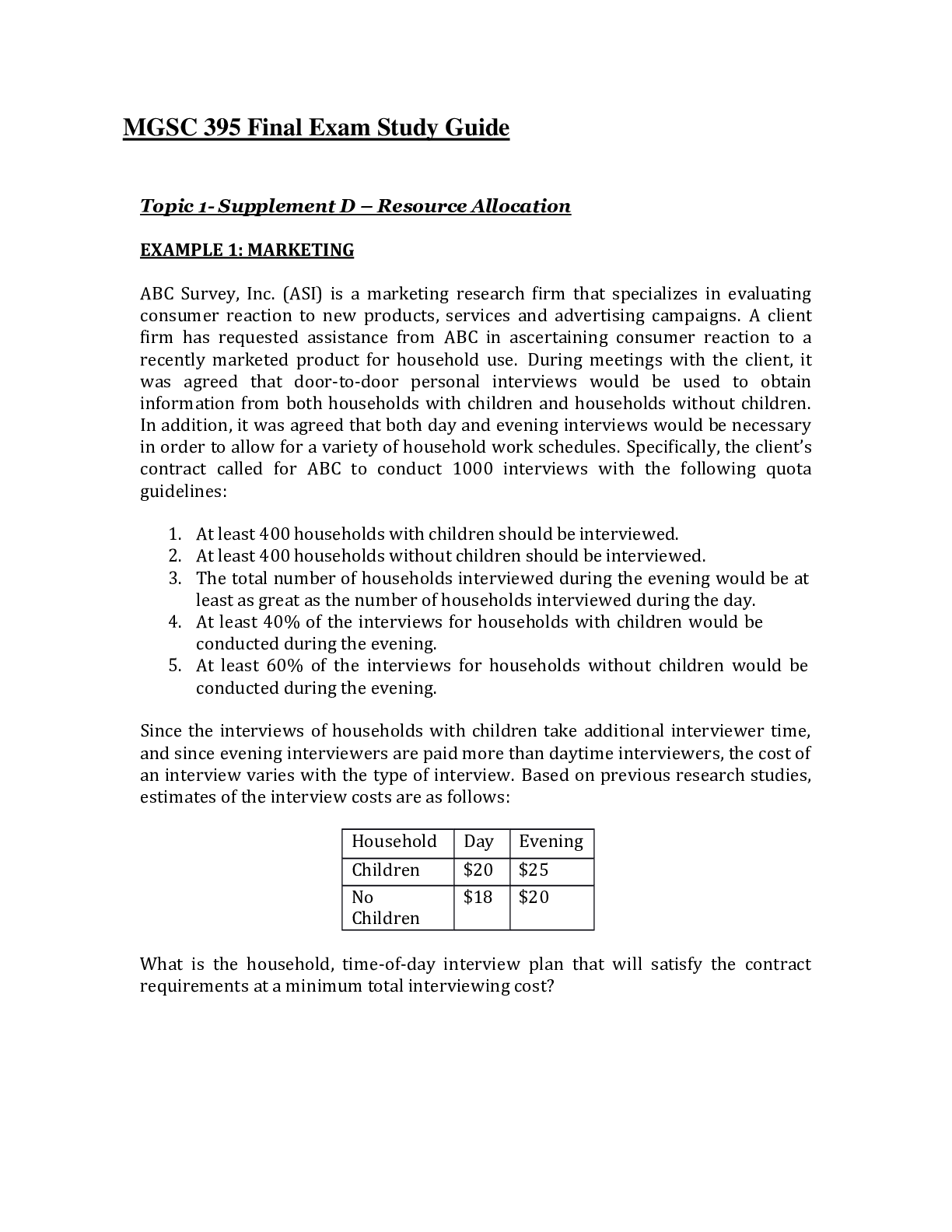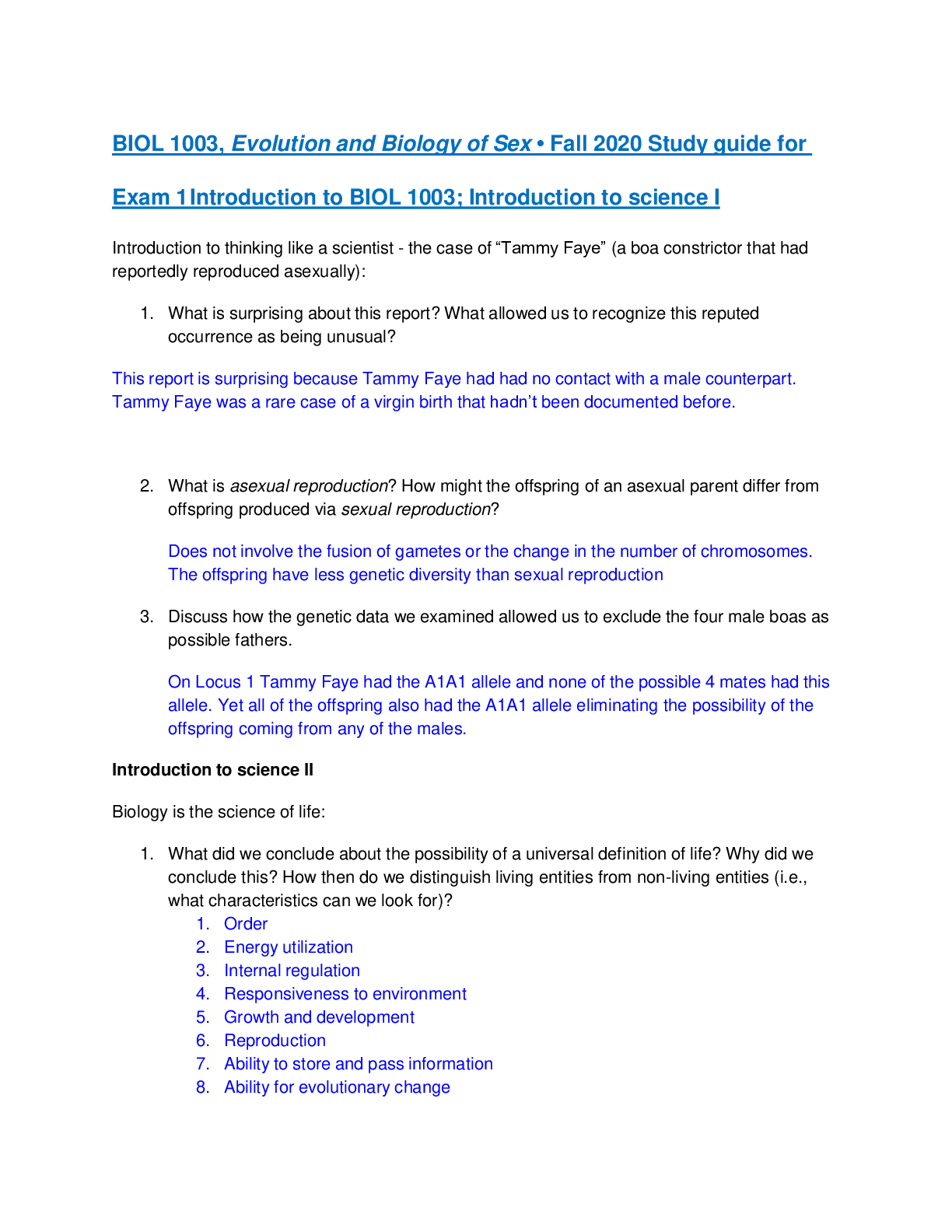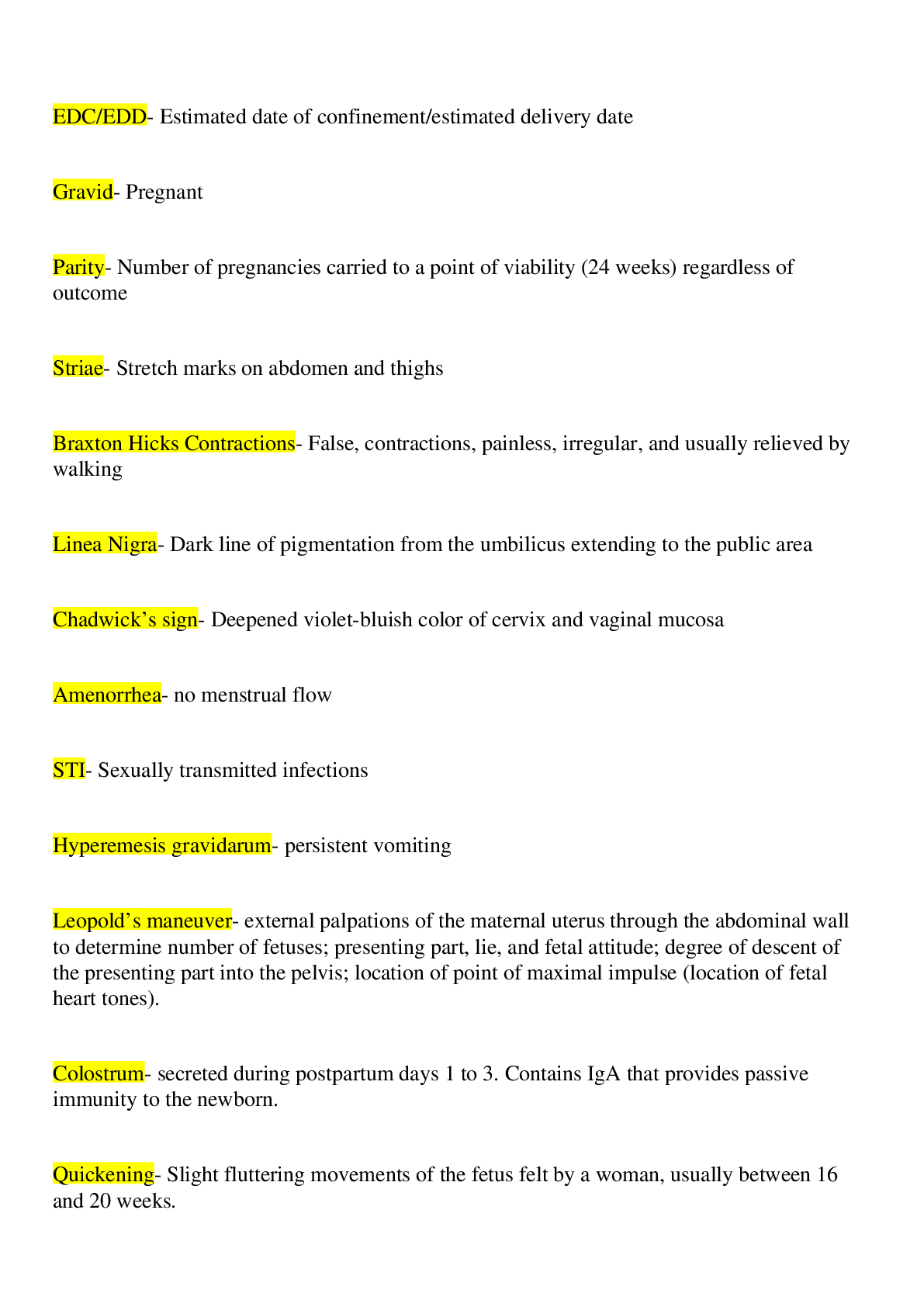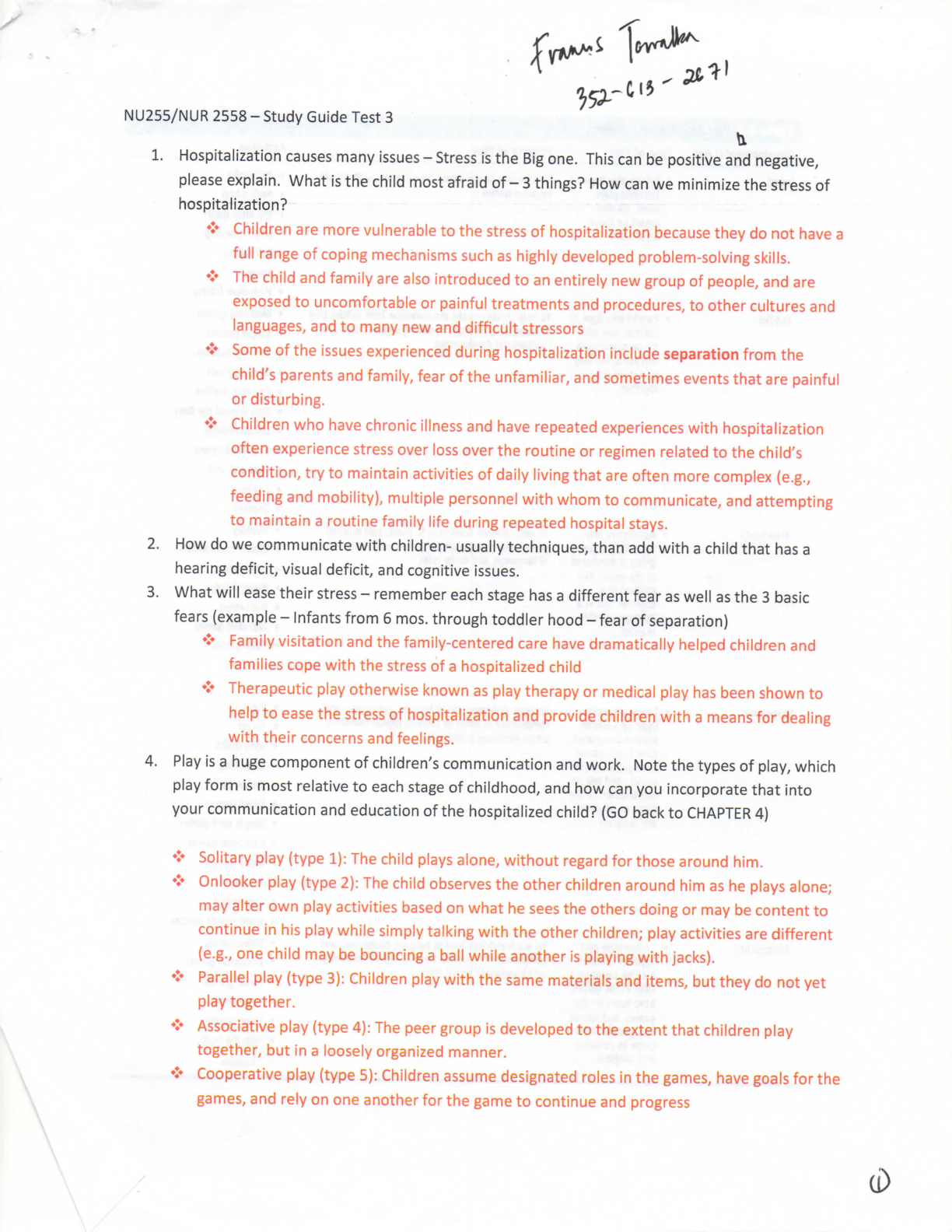*NURSING > STUDY GUIDE > Study Guide for Maternal Child Exam 2.1 (All)
Study Guide for Maternal Child Exam 2.1
Document Content and Description Below
1. Labor – contractions with cervical change a. Stages of Labor i. 1st stage (Labor) (dilation 1cm-1.5cm/hr.) – can take any time 1. Latent phase a. Longest and most variable duration (many ho... urs dur) b. 0-4 cm dilation; some effacement c. Contractions are irregular, mild to moderate; 5-30 min apart lasting 30-45 sec d. Mother i. Talkative and eager, excited e. Baby i. Little risk ii. Ask is the baby moving? 2. Active phase a. 4-6 hrs. duration (move 1-1.5 cm per hour); 2 hrs. for multiple i. Longer than 6 hours decreased perfusion to baby, fatigue of uterus b. 4-7 cm dilation; rapid effacement c. Contractions are regular, moderate to strong; 3-5 min apart lasting 40-70 sec d. Mother i. Feeling helpless; anxiety; restless; focused and introspective ii. Pain – best time to medicate at peak of contractions mother (see #4 Pain Management) iii. Hyperventilate – paper bag, oxygen mask without oxygen, relaxation and deep breathing e. Baby i. Some fetal descent; hypoxia during contractions ii. Decreased variability 3. Transition – fastest and most difficult part of labor a. No longer than 2 hrs! b. 8-10 cm (complete) dilation c. Contractions are very strong; 2-3 min apart lasting 45-90 sec d. Mother i. Tired, restless, irritable; feeling out of control, “cannot continue”; nausea, vomiting; urge to push; increased rectal pressure and feeling of BM; increased bloody show e. Baby i. Anything given now will go to baby ii. Early decels ii. 2nd stage – Baby delivery/pushing 1. 2 hrs duration (3 hrs with epidural/anesthesia) 2. Full dilation 3. Intense contractions 1-2 min apart iii. 3rd stage – Placental delivery 1. 5-30 min 2. Placental separation and expulsion a. Gush of blood b. Cord lengthening c. Uterus contracted globular d. Pressure 3. Schultz – shiny fetal surface emerges first 4. Duncan – dull maternal surface of placenta emerges first 5. Watch out for PP hemorrhage! a. Fundal height at umbilicus – hard fundal massage to prevent PP hemorrhage i. 4th stage – Stabilization/Recovery 1. 2 hrs duration 2. Lochia is scant to moderate rubra 3. Vital signs q15 min; fundal checks q15 for 1st hour, q30 min afterwards b. Five factors (“Ps”) that affect and define the labor and birth process: passenger, passageway, powers, position, and psychologic response. i. Passenger – consists of the fetus and the placenta. 1. Presentation – the part of the fetus that is entering the pelvic inlet first. It can be the back of the head (occiput), chin (mentum), shoulder (scapula), or breech (sacrum or feet). 2. Lie – the relationship of the maternal longitudinal axis (spine) to the fetal longitudinal axis (spine). .....................................................................CONTINUED................................................................. [Show More]
Last updated: 1 year ago
Preview 1 out of 36 pages
Instant download

Buy this document to get the full access instantly
Instant Download Access after purchase
Add to cartInstant download
Reviews( 0 )
Document information
Connected school, study & course
About the document
Uploaded On
Oct 25, 2021
Number of pages
36
Written in
Additional information
This document has been written for:
Uploaded
Oct 25, 2021
Downloads
0
Views
37

